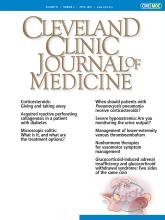We thank Dr. Sharma for the valuable contribution and concur with the opinion about optimal timing of initiating SGLT-2 inhibitors in hospital settings. In several pivotal trials, the timing for administering SGLT-2 inhibitors varied, and the data so far suggest that SGLT-2 inhibitors can augment loop diuretic efficiency. Some trials have started SGLT-2 inhibitors within 12 hours of admission for acute heart failure, and others, after heart failure was stabilized or shortly after hospital discharge. For instance, in the EMPAG-HF (Empagliflozin in Acute Decompensated Heart Failure) trial,1 empagliflozin was started within 12 hours of admission alongside standard diuretic therapy and continued for 5 days, resulting in a 25% increase in cumulative urine output without adverse effects on renal function compared with the placebo group. Similarly, in EMPA-RESPONSE-AHF (Effects of Empagliflozin on Clinical Outcomes in Patients With Acute Decompensated Heart Failure),2 patients were started on empagliflozin within 24 hours of presentation while on intravenous loop diuretics, significantly reducing the combined end point of in-hospital worsening heart failure, rehospitalization for heart failure, or all-cause mortality at 60 days compared with the placebo group.
We agree that in the DICTATE-AHF trial’s preliminary report the primary end point of cumulative diuretic efficiency did not achieve statistical significance (P = .06).3 However, starting dapagliflozin within 24 hours of presentation alongside protocolized titration of intravenous loop diuretics demonstrated favorable trends toward enhancing diuretic efficiency, evidenced by increased 24-hour natriuresis and diuresis, decreased total dose and duration of loop diuretic, and shortened time to hospital discharge compared to protocolized diuretic titration alone (all P < .01).3 These synergistic effects of SGLT-2 inhibitors with intravenous loop diuretics were largely attributed to substantial redistribution of intrarenal sodium delivery and reabsorption.4
Nevertheless, Dr. Sharma underscores an important point regarding SGLT-2 inhibitor initiation after medical stabilization. In fact, it is common for SGLT-2 inhibitors to be held or their initiation deferred when patients have concomitant acute illness or are scheduled for major surgery to avoid the risks of ketoacidosis and urinary tract infections, even though increased risks have not been observed in the above-mentioned acute heart failure studies. We look forward to seeing the outcomes of ongoing trials such as EMPA-AHF (Early Treatment With a Sodium-glucose Co-transporter 2 Inhibitor in High-risk Patients With Acute Heart Failure)5 aiming to elucidate the safety and efficacy of early SGLT-2 inhibitor initiation before clinical stabilization in high-risk acute heart failure.
Despite approval by the US Food and Drug Administration and clinical guideline recommendations, there is a gap in the use of SGLT-2 inhibitors among potentially eligible patients with ejection fraction greater than 40%. A recent retrospective analysis pointed to a strong association between hospitalization for heart failure and initiation of SGLT-2 inhibitors in this patient cohort.6 In addition, in-hospital initiation of SGLT-2 inhibitors was associated with improved postdischarge outcomes in patients with acute heart failure irrespective of heart function.7 These observations suggest that standardized approaches for in-hospital initiation may enhance prescription of these life-saving medications.6 We therefore highlight Dr. Sharma’s acknowledgment that upfront initiation of SGLT-2 inhibitor therapy during acute heart failure (as opposed to deferring it to outpatient settings) appears safe and presents an opportunity to facilitate its use as a long-term beneficial outpatient therapy.
- Copyright © 2024 The Cleveland Clinic Foundation. All Rights Reserved.






